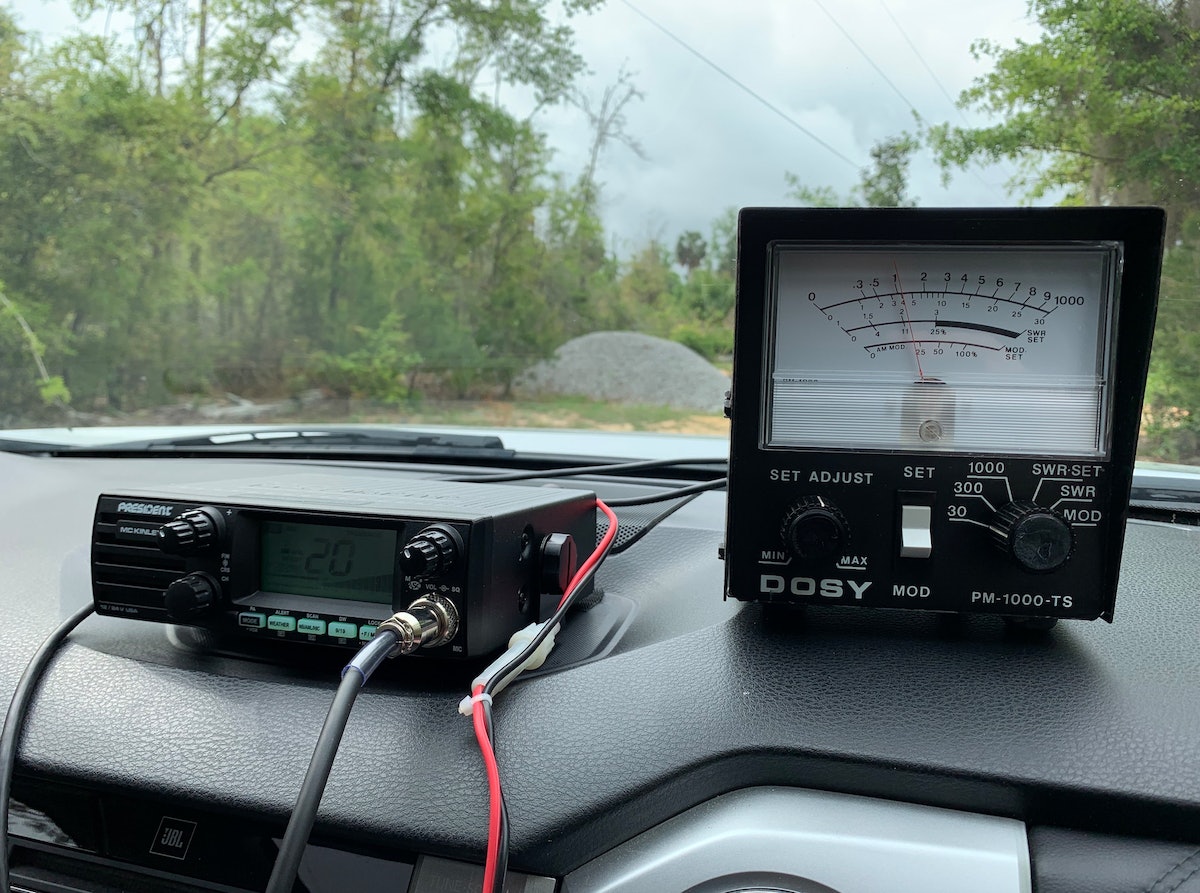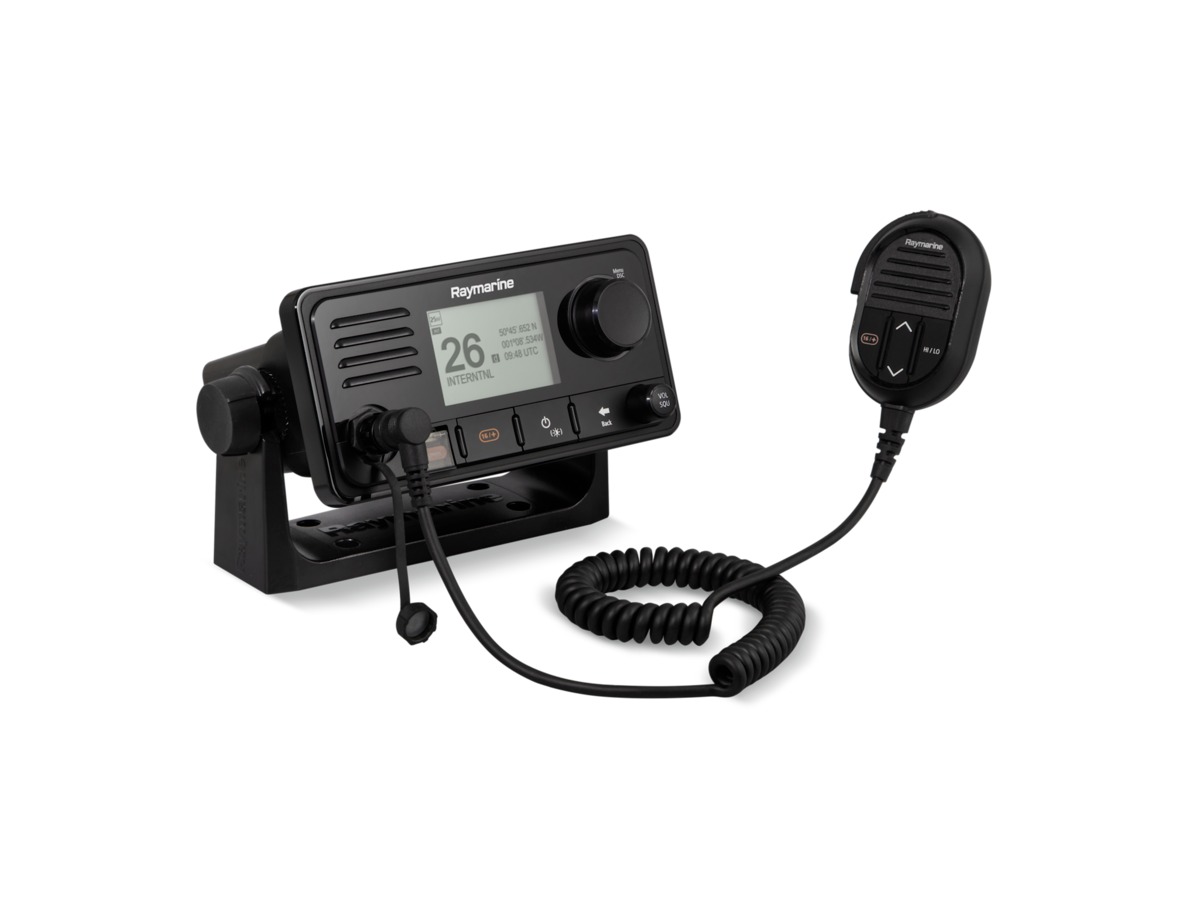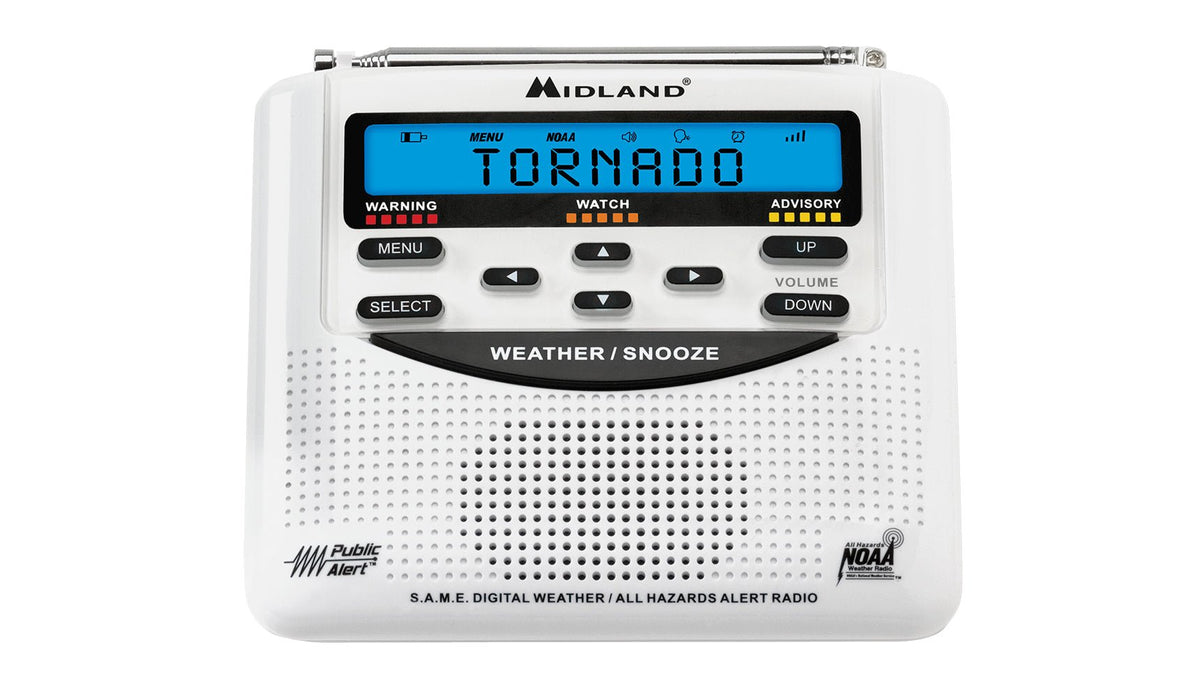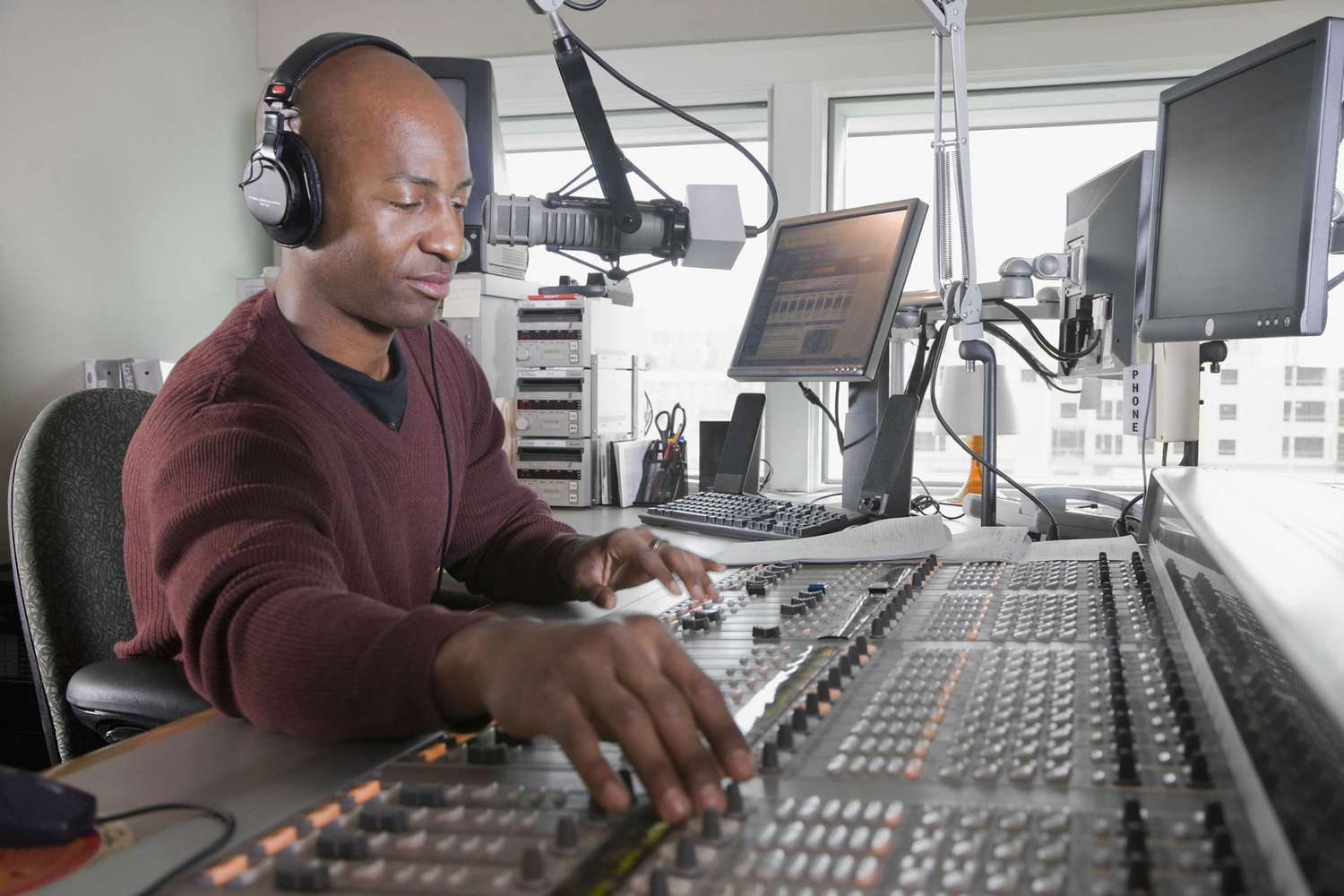Home>Devices & Equipment>Radio>What Is Radio Broadcast


Radio
What Is Radio Broadcast
Modified: January 22, 2024
Discover the power of radio with our comprehensive guide. Explore the history, technology, and impact of radio broadcasting in the modern world.
(Many of the links in this article redirect to a specific reviewed product. Your purchase of these products through affiliate links helps to generate commission for AudioLover.com, at no extra cost. Learn more)
Table of Contents
Introduction
Radio broadcast, one of the oldest forms of mass communication, has played a significant role in shaping societies and connecting people across the globe. It has served as a source of information, entertainment, and community engagement for generations. From the early days of radio waves to the modern digital age, radio broadcast has evolved, adapting to the changing technological landscape while retaining its timeless appeal.
Through the airwaves, radio broadcasts reach millions of listeners, providing them with news, music, talk shows, sports coverage, and much more. Its accessibility, portability, and affordability have made it a ubiquitous medium, present in homes, cars, workplaces, and even on-the-go via mobile devices and streaming platforms.
Radio broadcast has the unique ability to captivate listeners, painting vivid pictures through sound and engaging the imagination. It brings people together by creating shared experiences and fostering a sense of community. Whether it’s a captivating story, a live concert, or a lively discussion, radio has the power to create connections and evoke emotions that transcend geographical boundaries.
This article will explore the world of radio broadcast, delving into its definition, history, technology, types of programs, and its role in society. Additionally, we will discuss the structure of radio broadcasting, the challenges it faces, and its future in the digital age.
Definition of Radio Broadcast
Radio broadcast refers to the transmission of audio content through radio waves, allowing it to be received and listened to by a wide audience. It involves the dissemination of information, entertainment, and other forms of media through radio frequency signals, which are then captured by receivers, such as radios or other devices.
Radio broadcast utilizes a unique combination of technologies, including modulation and demodulation, to convert analog or digital audio signals into radio waves that can travel through the atmosphere. These waves are then picked up by antennae and converted back into sound by the receiving devices.
One of the defining features of radio broadcast is its ability to reach a mass audience simultaneously. Unlike other forms of media that require individual access, such as televisions or computers, radio broadcasts can be heard by anyone within the range of the broadcast signal, making it a powerful tool for information dissemination and cultural exchange.
Radio broadcast encompasses a wide range of content, including music, news, sports, weather updates, talk shows, educational programs, and more. It serves as a platform for various types of programs and formats, catering to diverse audience preferences and interests.
In recent years, the advent of digital technology has expanded the definition of radio broadcast. Online streaming, podcasting, and satellite radio have emerged as alternative means of transmitting audio content, allowing listeners to access radio programming beyond the traditional terrestrial airwaves.
Overall, radio broadcast is a dynamic medium that continues to evolve and adapt to the changing technological landscape. It remains a vital part of our media landscape, providing information, entertainment, and a sense of connection to audiences around the world.
History of Radio Broadcasting
The history of radio broadcasting dates back to the late 19th century when scientists and inventors began exploring the concept of wireless communication. One of the key figures in radio history was Guglielmo Marconi, who successfully transmitted the first wireless telegraph signal across the Atlantic Ocean in 1901. This groundbreaking achievement paved the way for the development of radio broadcasting.
In the early 20th century, radio technology rapidly advanced, and the first commercial radio broadcast occurred in 1920 in the United States. The station, known as 8MK (later renamed WWJ), aired news, music, and other forms of programming, captivating listeners and sparking the birth of a new medium.
As radio broadcasting gained popularity, more stations began to emerge, offering a diverse range of content to captivate audiences. The 1920s and 1930s marked the golden age of radio, characterized by the rise of radio dramas, variety shows, and live performances. Families would gather around their radios, eagerly tuning in to their favorite programs, fueling a sense of shared experience and cultural unity.
During World War II, radio proved to be a critical source of information and morale for soldiers and civilians alike. News updates, entertainment shows, and patriotic broadcasts played a crucial role in keeping the public informed and connected during challenging times.
In the following decades, radio broadcasting continued to evolve, embracing new technologies and formats. The advent of FM radio in the 1940s allowed for improved sound quality and expanded programming options. The rise of transistor radios in the 1950s and 1960s brought radio into the hands of a broader audience, enabling people to listen on the go.
The 1970s saw the emergence of specialized radio formats, catering to specific genres and target audiences. This period witnessed the rise of album-oriented rock, adult contemporary, country, and talk radio, among others. FM radio became the dominant platform for music, offering greater sound fidelity and an expanded playlist.
In the late 20th century, the digital revolution brought new possibilities to radio broadcasting. The development of satellite radio, internet streaming, and podcasting provided listeners with an abundance of choices and the ability to access radio programming anytime, anywhere.
Today, radio broadcasting continues to thrive, albeit in a digital landscape. From traditional AM/FM stations to online platforms, radio remains a beloved and influential medium, providing news, entertainment, and a sense of community to listeners around the world.
Radio Broadcasting Technology
Radio broadcasting relies on various technologies to transmit and receive audio signals, allowing for the widespread dissemination of content. Over the years, advancements in technology have revolutionized the way radio signals are broadcast and received, enhancing the overall quality and reach of radio programming.
One of the fundamental technologies used in radio broadcasting is modulation. Modulation involves altering a carrier wave’s characteristics, such as frequency, amplitude, or phase, to embed audio signals. This process allows audio content to be transmitted efficiently over radio waves.
In the early days of radio, analog modulation techniques, such as amplitude modulation (AM) and frequency modulation (FM), were commonly used. AM modulation varies the amplitude of the carrier wave to encode the audio signal, while FM modulation alters the frequency. These analog modulation techniques continue to be employed by broadcast radio stations today.
With the advent of digital technology, digital modulation techniques, such as Digital Audio Broadcasting (DAB) and HD Radio, became popular. Digital modulation offers improved sound quality, greater resistance to interference, and the ability to transmit additional data alongside the audio signal.
Digital Audio Broadcasting, or DAB, uses digital signals to carry audio content, providing listeners with CD-quality sound and offering a wider range of channels. DAB also allows for the display of additional information, such as song titles and artist names, on compatible receivers.
HD Radio, on the other hand, combines analog and digital signals to provide enhanced sound quality and additional features. It offers FM stations the ability to broadcast a secondary digital signal, providing listeners with access to additional channels and content.
Another significant technological advancement in radio broadcasting is the shift from traditional terrestrial broadcasting to online streaming. The internet has enabled radio stations to reach a global audience through live streaming services and dedicated radio apps. Listeners can tune in to their favorite stations from anywhere in the world, expanding the reach and accessibility of radio broadcasting.
Moreover, advancements in satellite technology have led to the rise of satellite radio. Satellite radio services, such as SiriusXM, utilize satellites to transmit audio signals directly to receivers, providing listeners with a wide range of channels and content options.
As technology continues to evolve, radio broadcasting is likely to embrace new innovations, such as improved compression algorithms for more efficient data transmission and the integration of radio with emerging technologies like voice assistants and smart devices.
Overall, radio broadcasting technology has transformed the medium, enabling broadcasters to deliver high-quality content to a vast audience and providing listeners with a diverse range of programming choices.
Types of Radio Programs
Radio broadcasting offers a wide range of programs, catering to diverse audience interests and preferences. From music to news, talk shows to sports coverage, there is a radio program for nearly every taste. Let’s explore some of the different types of radio programs:
- Music Programs: Music is a cornerstone of radio programming. Music programs encompass various genres, including pop, rock, classical, jazz, and more. These programs feature curated playlists, artist interviews, live performances, and listener requests.
- News and Current Affairs: Radio is a vital platform for delivering news updates and current affairs discussions. News programs provide listeners with the latest local and international news, covering politics, economics, sports, and more. They often feature interviews with experts and reporters in the field.
- Talk Shows: Talk shows cover a broad range of topics, including politics, social issues, relationships, health, and self-improvement. Hosted by knowledgeable and charismatic presenters, talk shows often feature guest interviews, listener call-ins, and lively discussions.
- Sports Programs: Sports programs provide live coverage and analysis of sporting events, including football, basketball, cricket, and more. These programs offer play-by-play commentary, interviews with athletes and coaches, and discussions about the latest sports news and updates.
- Radio Dramas and Audio Books: Radio dramas, also known as radio plays or audio dramas, are scripted performances with sound effects and voice actors. They bring stories to life through sound, engaging listeners with immersive narratives. Similarly, audio books provide listeners with the opportunity to enjoy literature and storytelling in an audio format.
- Comedy Programs: Comedy programs are dedicated to delivering laughter and entertainment. They feature stand-up performances, comedic sketches, prank calls, and humorous discussions. Comedy programs aim to entertain listeners and provide a lighthearted escape from everyday life.
- Religious and Spiritual Programs: Radio broadcasts have long served as a medium for religious and spiritual content. These programs include sermons, religious teachings, devotional music, and spiritual discussions. They cater to diverse faiths and offer guidance and inspiration to listeners.
- Educational Programs: Educational programs focus on imparting knowledge and fostering learning. They cover a variety of subjects, such as history, science, literature, and language learning. Educational programs may include interviews with experts, documentaries, and engaging lectures.
These are just a few examples of the diverse range of radio programs available. Many stations offer a mix of different program types throughout the day, ensuring there is something for everyone. The variety of radio programs reflects the medium’s ability to engage, entertain, and inform listeners with an immersive audio experience.
Role of Radio Broadcast
Radio broadcast plays a crucial role in society by serving as a medium for information, entertainment, cultural preservation, and community engagement. Its unique characteristics and widespread accessibility contribute to its enduring significance. Let’s delve into the various roles that radio broadcast fulfills:
- News and Information: One of radio’s primary functions is to disseminate news and information to the masses. Radio stations provide timely updates on local, national, and international events, keeping listeners informed about current affairs, weather updates, traffic reports, and more. It serves as a reliable source of news, especially in times of crises and emergencies when other forms of media may be inaccessible.
- Entertainment and Music: Radio broadcast offers a wide variety of entertainment options to listeners. Music programs play an essential role in introducing new artists, promoting different genres, and providing a platform for musical expression. Additionally, radio dramas, talk shows, and comedy programs entertain listeners, offering a break from the daily routine and fostering a sense of enjoyment and relaxation.
- Cultural Preservation and Promotion: Radio serves as a medium for preserving culture and heritage. It provides an avenue for promoting local artists, musicians, and storytellers, preserving traditional music, folk tales, and languages. Radio also fosters a sense of community by broadcasting local events, festivals, and cultural programs, bringing people together and celebrating their unique identity.
- Social Impact and Community Engagement: Radio broadcast plays a pivotal role in community engagement and social impact. It connects people, facilitates dialogue, and promotes social change. Through talk shows and interviews, radio provides a platform for discussing social issues, raising awareness, and fostering conversations that can lead to positive action and shared understanding.
- Educational Platform: Radio serves as an educational tool for lifelong learning. Educational programs offer informative content, interviews with experts, and discussions on various subjects. It provides accessible learning opportunities, particularly in areas where access to formal education is limited. Radio also supports language learning, literacy campaigns, and public service announcements on health, hygiene, and other important topics.
- Companionship and Emotional Connection: Radio serves as a loyal companion, especially for those who may feel isolated or lonely. It provides a sense of company and emotional connection, offering familiar voices, music, and engaging content that can uplift spirits, alleviate stress, and provide comfort during challenging times.
The role of radio broadcast extends beyond entertainment and information; it shapes culture, empowers communities, and fosters a sense of belonging. In a world increasingly driven by visual media, radio’s power lies in its ability to engage the imagination, stimulate emotions, and create meaningful connections.
Radio Broadcast Structure
Radio broadcast follows a structured format that enables stations to deliver a seamless flow of content and keep listeners engaged. The structure of radio broadcasts typically consists of various segments and elements that work together to create a cohesive and enjoyable listening experience. Let’s explore the key components of radio broadcast structure:
- Opening: The broadcast usually begins with an opening segment, which sets the tone, introduces the program, and provides some context to the listeners. This may include a brief welcome message, an overview of the upcoming content, and any important announcements.
- News and Updates: News segments are often included to provide listeners with the latest headlines and relevant information. These segments may cover local news, national news, international news, weather updates, sports scores, and traffic reports. News is usually delivered at regular intervals throughout the broadcast.
- Music Programming: Music is a vital component of radio broadcasts. Depending on the format of the station, music segments can vary in length and style. DJs or on-air hosts may introduce songs, share interesting facts about the artists or album, and interact with listeners through song dedications and requests.
- Talk Shows and Interviews: Talk shows and interviews are common elements in radio broadcasts, providing opportunities for in-depth discussions, expert opinions, and engaging conversations. Talk show segments may cover a wide range of topics, including current events, politics, lifestyle, health, and more.
- Commercials and Sponsorship: Radio broadcasts often include commercial breaks to generate revenue. These breaks feature advertisements and promotional messages from sponsors. Commercials are strategically placed throughout the program to ensure a balanced and non-intrusive listener experience.
- Special Features and Segments: Many radio broadcasts incorporate special features and recurring segments to add variety and entertainment value. These may include listener call-ins, contests, quizzes, live performances, comedy sketches, storytelling, and other engaging content designed to captivate the audience.
- Closing: The radio broadcast typically concludes with a closing segment, wrapping up the program and thanking the listeners for tuning in. This may include final announcements, acknowledgments to guests or contributors, and a preview of upcoming shows or events.
The specific structure and duration of segments within a radio broadcast may vary depending on the station’s format, target audience, and time of day. Stations may have different programming schedules, such as morning shows, afternoon drives, and evening programs, each tailored to the preferences and habits of their respective listeners.
Radio broadcasters carefully design the structure of their programs to provide a balanced mix of information, entertainment, and advertising, ensuring a seamless and engaging listening experience. The structured approach allows them to deliver content in a way that maximizes audience engagement and keeps listeners tuned in throughout the broadcast.
Challenges and Future of Radio Broadcasting
While radio broadcasting has stood the test of time, it faces a set of challenges in the evolving media landscape. However, it has also paved the way for new opportunities and innovations that promise an exciting future for the medium. Let’s explore some of the challenges and the potential future of radio broadcasting:
Competition from Digital Media: One of the significant challenges for radio broadcasting is the growing competition from digital media platforms. Streaming services, podcasts, and online content have diversified the entertainment landscape, giving listeners alternative options to traditional radio. To stay relevant, radio stations need to adapt, embracing digital platforms and exploring new ways to engage with their audience online.
Changing Listening Habits: The rise of on-demand content and personalized playlists has led to changes in listening habits. People now have more control over what they listen to and when they listen to it. To address this challenge, radio broadcasters can focus on creating unique, live experiences, fostering interactive engagement with the audience, and delivering content that is not easily replicated through other media.
Monetization: As traditional advertising models evolve, radio broadcasters face the challenge of monetizing their content effectively. Advertisers are exploring digital avenues, and radio stations need to find innovative ways to attract and retain advertisers while delivering value to their listeners. This can include targeted advertising, branded content, and strategic partnerships.
Technological Advancements: Technological advancements have transformed the radio broadcasting landscape. The future of radio lies in embracing these advancements. The convergence with digital platforms, internet streaming, and smart devices provides opportunities for radio to reach a broader audience and deliver content beyond the limitations of traditional broadcasting.
Inclusion and Diversity: Radio broadcasting can face challenges in representing diverse voices and perspectives. It is important for the future of radio to ensure inclusivity, promote diversity, and reflect the multicultural nature of society. By embracing diverse talents, tackling bias, and featuring a variety of programming, radio can continue to be a powerful tool for connection and understanding.
Localization and Community Engagement: Radio’s unique ability to connect communities can be leveraged to address the challenge of globalization. Radio stations can focus on localized content, community-driven projects, and engaging listeners through interactive features and social media. This facilitates a sense of belonging, fosters community engagement, and differentiates radio from other forms of media.
Despite these challenges, the future of radio broadcasting is bright. The medium holds a special place in the hearts of many, offering a free and easily accessible source of information, entertainment, and human connection. Radio’s potential lies in its ability to adapt to new technologies, embrace digital platforms, and deliver engaging and relevant content that resonates with audiences of all ages.
Conclusion
Radio broadcast has undoubtedly left an indelible mark on the world of mass communication. From its humble beginnings as a means of wireless telegraphy to the modern digital age, radio has evolved, adapted, and remained a powerful medium for information, entertainment, and community engagement.
Throughout its rich history, radio has proven its ability to captivate and connect people. It serves as a steadfast companion, a source of news and knowledge, and a platform for cultural preservation and celebration. Despite the challenges posed by digital media and shifting listening habits, radio continues to find innovative ways to remain relevant and indispensable to audiences worldwide.
The future of radio broadcasting lies in embracing technological advancements, utilizing digital platforms, and delivering engaging and diverse content. The medium must find ways to cater to the changing needs and preferences of the audience while retaining its unique ability to create shared experiences and foster a sense of community.
As radio broadcasters adapt and evolve, it is crucial to prioritize inclusion, diversity, and localization. By amplifying diverse voices, addressing local issues, and engaging with communities, radio can continue to be a conduit for understanding, connection, and social impact.
In conclusion, radio broadcasting holds a special place in the world of media. Its ability to transcend geographical boundaries, evoke emotions, and entertain is unmatched. With the ongoing advancements in technology and digital platforms, radio has the potential to reach new heights, embracing the opportunities of the digital age while staying true to its fundamental role in society.
As we move forward, let us cherish and support radio broadcasting, appreciating the unique experiences it offers and recognizing its enduring power to inform, entertain, and inspire. Whether through the airwaves or online streams, radio will continue to be a beloved companion, connecting people and enriching their lives in ways that no other medium can.











